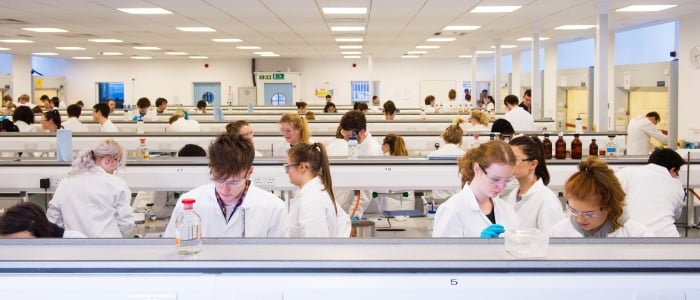As a lecturer in human life sciences at the University of Glasgow, I interact with students daily, using a variety of teaching techniques. I’m a great believer in using technology in my teaching, largely because technology is so ubiquitous in our everyday lives, it's inevitable students will be using it in their future careers, and it’s part of my job to prepare them for that.
In addition, technology can bring new experiences to students, expand their knowledge and interests, and engage them in the subject. Video is one of the simplest teaching technologies available, and yet it is probably underused in university teaching.
Seeing New Tech Opps
When I heard about JoVE’s Science Education videos from one of the company’s curriculum specialist managers, I saw a chance to utilize a new technology in my teaching. I hadn’t realized that education videos existed alongside the JoVE Journal — but was delighted to find relevant topics covered succinctly by scientists, for scientists.
While there is a plethora of video content available on YouTube and other platforms, the quality is variable, and many videos are aimed at a more general, non-scientific audience. It’s great to steer students to high-quality, relevant videos at the right level.
Getting Lab Techniques Right
One of the most difficult skills to teach in the life sciences is lab techniques. We strive to give our students as much lab experience as possible, but cost, scheduling, student volumes, and equipment availability limit what we can include in our courses. The basic and advanced JoVE biology videos have allowed me to introduce my students to a variety of techniques that we can’t currently teach firsthand in the classroom (examples include calcium imaging, patch clamping and behavioral neuroscience methods).
I have also used these videos to help prepare students for lab sessions. By asking them to watch a video in advance, students arrive at the lab with knowledge of the basic principles and techniques. We can then focus on more complex concepts and procedures during the teaching session.
Fast-forwarding to the Main Teaching Points
 The general laboratory techniques videos have been particularly useful for preparing students for experiments. For example, when using a centrifuge as part of a larger experiment, we don’t need to spend a lot of time going over how the centrifuge works. Or, when using light microscopes, students can gain an appreciation of how the slides were prepared without going through the whole process.
The general laboratory techniques videos have been particularly useful for preparing students for experiments. For example, when using a centrifuge as part of a larger experiment, we don’t need to spend a lot of time going over how the centrifuge works. Or, when using light microscopes, students can gain an appreciation of how the slides were prepared without going through the whole process.
I have begun to use articles from the JoVE Journal, too. I share videos with students, as if we were in a journal club. The content has led to discussions on techniques, as well as general science problems, such as the reproducibility crisis. It’s vital that our students are kept up-to-date with new methods. JoVE provides an accessible format for this, encouraging students to not only learn about the techniques, but also to consider how they could be adapted or enhanced in different scenarios.
I haven’t yet gathered evidence that this type of technology has improved student subject retention overall. But I have plenty of anecdotal evidence that it has improved their engagement, and that, for me, is an excellent starting point. Videos are cropping up more and more in my discussions with students. The students share their favorites with peers, and I’m even finding videos in their essay reference lists. So, more physiology videos, please, JoVE community!

